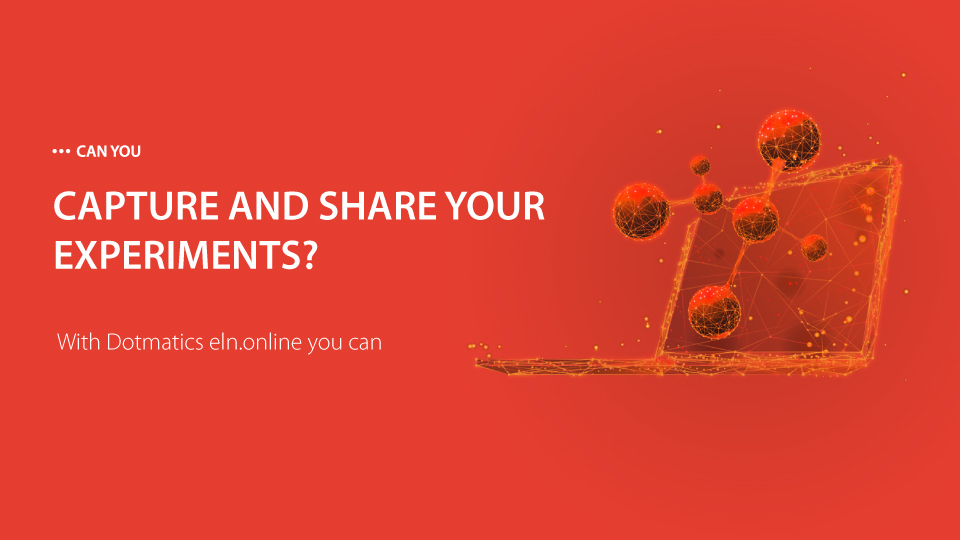You’re ready to invest in your lab, so you immediately think to compare solutions that best suit your needs for capturing data. This will likely involve comparing a LIMS vs ELN.
The choice can feel overwhelming when options seem endless. Many questions will likely arise. Perhaps the first should be: Do I really need to choose one versus the other?
First, let us do a quick review of what these systems are typically used for.
LIMS vs ELN Comparison
LIMS (Laboratory Information Management System)
LIMS have been seen as more sample- and instrument-centric and thus best suited for capturing standardized repetitive analyses.
Track samples
Attach instrument records to samples
Output basic analytical reports
Monitor lab instruments
Manage lab tasks and inventory
ELN (Electronic Laboratory Notebook)
ELNs are often thought to offer more flexible data analyses, thus making them best suited for exploratory R&D efforts.
Collate unstructured data
Customize complex analysis workflows
Record experimental observations
Collaborate with colleagues
Track all data-record edits
Create detailed reports
Traditionally, LIMS and ELN have been seen as distinct options. But technology advances have a way of pushing boundaries and blurring lines. (After all, there was a time when a watch doubling as a phone was the stuff of spy films.) As the line between LIMS and ELNs blurs, it’s time to change our ways of thinking. It’s time to move beyond finding the best way to automate instrument-data acquisition, and instead look for a solution that helps leverage all data to guide R&D decisions. While it can be hard to abandon dichotomous ways of thinking, evolving your expectations can position your lab for success.
Uniting LIMS and ELNs
Today, many scientific R&D platforms unite the capabilities of LIMS and ELNs within a single environment, which means no more requirements abandoned because a choice had to be made and no more time lost integrating rigid single-purpose systems. Unified platforms often offer elements traditionally housed in both LIMS and ELNs, and more. Features may include:
Lab digitalization: Monitor instruments and automate instrument-data transfer, processing, and QA in order to save time, eliminate errors, and ensure data integrity.
Inventory and process management: Manage everything—from samples and inventory to analysis requests and task assignments.
Data federation: Unite data on a secure central data hub accessible via sophisticated browsing and querying tools.
Analysis and reporting: Feed data into customizable analysis workflows that help provide insight and guide efforts.
Finding a Cross-Discipline Solution
An important factor to keep in mind is that some research informatics platforms do a better job than others in meeting the needs of modern teams, who often collaborate across disciplines and with external CROs. You may need to find a solution that:
Supports for diverse workflows: Can the system handle both structured and unstructured workflows across biology, chemistry, and materials science?
Securely scales up: Will the solution handle vast data volumes due to high-throughput efforts and complex data types?
Provides powerful analytics and decision-support tools: Does the platform move beyond basic statistics to also offer cheminformatics, bioinformatics, and decision-support tools?
Facilitates secure cross-team collaboration: Will the system protect your IP with auditable data trails, signing and countersigning, one-way data transfer, and user-level permissions for internal teams and CROs?
Dotmatics Unites Systems and Teams
The Dotmatics research informatics platform has a major advantage over many combined ELN/LIMS solutions, because it seamlessly handles diverse datasets and supports both standardized and unstandardized workflows across different scientific labs. Moreover, because Dotmatics workflows can be easily configured, users don’t need to conform to a rigid system. Anyone engaging in the R&D infrastructure can align the Dotmatics system to their specific needs.
This sentiment was echoed by the team at Compugen, a clinical-stage drug discovery and development company focused on identifying novel immuno-oncology drug targets and biomarkers. Compugen recently replaced their existing LIMS and ELN systems with Dotmatics’ unified solution. They’ve rolled Dotmatics out to their cross-discipline teams with the goal of consolidating research data and improving efficiency and productivity.
“We chose to work with Dotmatics due to its position as a leading, single platform for high quality scientific software. We believe that Dotmatics’ technology of integrated, configurable software is well suited to meet our specific and unique data management requirements, and will enable improved usage, accessibility and sharing of our proprietary generated information with the various teams within Compugen.”
(Eran Ophir, Ph.D., Vice President of Research and Drug Discovery, Compugen)
LIMS and ELN Sample Use Cases
Let’s take a look at a few examples where the Dotmatics unified platform has been leveraged.
Example 1: Sample and Request Management
Traditionally, sample and request management systems would be in the domain of a LIMS system. But on a unified platform, these capabilities can be made part of a workflow shared by both analytical labs and scientists. As such, all associated results and annotations are not only kept in one system on the same data model, but all knowledge can be easily shared amongst all colleagues, even if they’re in different labs.
Example 2: Mass Spec Data Capture
Capturing, uploading, and analyzing data from mass spec can be an onerous process. A unified platform that helps integrate and automate steps to this process can save an extraordinary amount of time. One mass-spec core facility at a large pharma company implemented a Dotmatics platform solution to capture and process the 700Gb – 1Tb of files they were producing per week. They replaced a two-to-three-day process whereby scientists manually loaded their data into a data store and then manually analyzed it. With the unified Dotmatics solution:
Data collection improved 63x
Each scientist saved two-thirds of the time formerly spent on manual processing
Data was automatically QC’d and dashboards were ready for review within seconds of the analysis completing
Operational analysis and dashboards allowed instrument drift to be detected and prompted scientists to develop novel system suitability metrics for high value samples.
Example 3: HCS Data Processing
One leading biotech replaced their problematic HCS data process with a streamlined, Dotmatics-based workflow that helped them evolve from:
Slow to fast: Two-part, periodic scripted uploads that were used to move raw results first to an enterprise file management system and then to image analysis software was replaced with streamlined, automatic, real-time transfers from instruments to image-analysis software.
Lossy to lossless: Limited-capacity native instrument software prone to crashes and losses when transferring only final results was replaced with fully-synched, automatic cloud upload of all raw data, protocols, and full results.
Manual to insightful: Manual data sorting and analysis was replaced with real-time report dashboards that enabled both equipment monitoring and decision making.
Example 4: Proactive Bioreactor Management
A large Pharma company’s two-to-three-day Excel-based process of manually gathering, collating, and analyzing data from their reactors was keeping them stuck in reactive mode. By switching to Dotmatics solutions to automatically aggregate and report data, the team can now proactively mitigate problems before they arise. For example, an AI model of dissolved-oxygen crashes was applied to predict the likelihood of a crash up to two hours in advance, giving operators time to adjust the bioreactor and avoid a crash.
Learn More About Dotmatics
Read more about the unified Dotmatics platform or request a demo to learn how Dotmatics can combine the features of an ELN or LIMS and enhance innovation.




